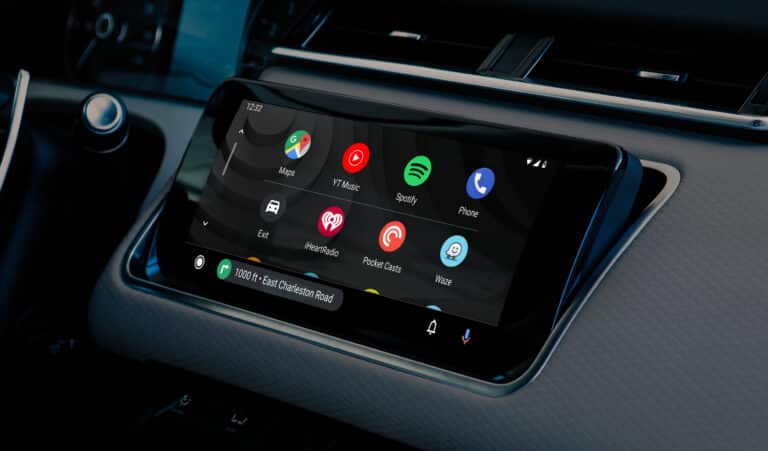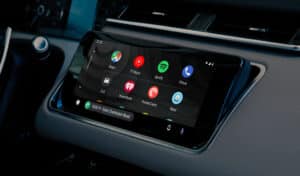Android is gaining popularity. While Android used to be limited to your phone, it’s now expanded to include Android Wear, Android TV(now dubbed Wear OS), and, obviously, Android Auto.
Android Auto has been around for a while as a method for customers to enjoy the benefits of Android in their car, but it recently received a major update, allowing it to enable WiFi connectivity.
Is the improvement to Android Auto Wireless all that significant? Is it worthwhile to invest in an in-car entertainment system including the Kenwood Excelon DMX905S? To discover out, we placed Android Auto & Android Auto Wireless to the test.
What you will see here?
Android Auto Installation

One of the best features of Android Auto is how simple it is to set up. Why? Because the software is essentially a wrapper for your phone, it doesn’t contain any of its data.
All of your contact, music preferences, GPS data, and other information upload directly from your phone through a simple interface.
One thing you’ll need to do is get the Android Auto software installs on your phone. Then there are a few requirements for Android Auto Wireless to meet.
To begin, make sure you have a compatible phone. Unfortunately, the list of phones suitable with Android Auto Wireless is set to Pixel and current Nexus devices. so you’re out of luck if you don’t have one of those phones.
The next step is to connect your phone to the automobile using a USB cord. Rather than just being a charging port, it connects to the system. If your phone and car are suitable, turn on and connect Bluetooth, and the phone may connect to Android Auto over Wi-Fi as well.
When you power on your car, it should then automatically activate and connect.
Setup

After you’ve set up Android Auto and it’s ready to go. This could launch automatically once you plug it in, or you may have to open it from your car’s navigation system after plugging in your phone or connecting wirelessly.
In any case, when you start your car, Android Auto should automatically launch. But it may take a few seconds depending on your phone. It took 5-10 seconds for a first-generation Google Pixel XL running the Android P beta to launch. Albeit that could be because the phone has lately slowed down and is running a test version of Android.
User Interface (UI)

Because Android Auto was made with the aim of use while driving, Google is gone to great lengths to make it as simple as possible.
The overall interface separates into five screens, however, you’ll probably only use two or three of them. The home screen is a Google Now-style display that offers items like recently played songs and podcasts that you can continue listening to, easy access to navigational places, and so on.
You transport to the relevant display if you tap on those cards. If you tap on the navigational card, for example, you direct to the Google Maps screen, which can also access fast by tapping the menu’s bottom-left icon bar.
Your phone app is from the right of that. Then there is a home screen, followed by an audio control screen, and finally, a tab that simply says “Return to Kenwood Home” (we test Android Auto on the Kenwood Excelon DMX905S).
Overall, the UI is functional and prevents you distract. Icons are large and easy to read, and information is visible at a glance to keep their attention on the road as often as possible.
It’s a little different from an in-dash phone mount, and you’ll have to get used to shifting your eyes even more to view maps – though some people may prefer to be using voice navigation anyway.
Android Auto Google Podcast App

It appears that Google has a few challenges to work out. To begin with, the new Google Podcasts app releases in 2018.
Instead, Google Play Music’s half-played podcasts appeared, ignoring the fact that we would be running Google Podcasts and had playback control on the phone.
Thankfully, you could listen to podcasts via voice commands or immediately on your phone. Given that it’s a Google product, we believe Android Auto compatibility should have been available from the start.
There are a few apps that are available for Android Auto, but there aren’t many. Spotify and Waze are two of the most famous.
When it comes to texting, Facebook Messenger also works with Android Auto to allow you to touch on a notice to have it read to you and then respond with your voice.
Another oddity is that when using Google Assistant to make phone calls, seems to shut Android Auto and make that determination through the car’s navigation system rather than through Android Auto’s dialer on a few occasions.
That meant that once finish the call, we would have to manually reopen Android Auto. We can always go to the keypad and directly make a call, which uses the Android Auto smartphone but only with voice controls. It’s a strange bug, and we have no idea why it’s there.
Android Auto Voice Recognition

For phone calls, Android Auto has a wide keypad and plenty of screen space (at least on the Civic’s 7-inch screen) to display features like Missed Calls, Call History, Contacts, and Voicemail. However, you shouldn’t need to utilize the keyboard because most calls finish with just your voice. It’s as simple as pressing and holding the VR button on the steering wheel, or the symbol on the screen, then saying a contact or number out loud to make a call.
Another feature that gains from speech recognition is messaging, which considerably outperforms comparable hand-free text features offered by manufacturers in terms of ease and accuracy. Android Auto could be used to narrate a message, and it plays back before sending it. It allows you to edit or cancel it. When a message arrives, you’ll get a pop-up notification and the opportunity to reply using voice commands.
One of the more surprising features of Android Auto is that it allows you to utilize Google’s Voice Search for nearly anything, and the results spoke back to you.
Android Auto Automobiles Integration

Android Auto interfaces with your car in a variety of ways to provide a better user experience. However, some of them could be beneficial.
To begin with, Android Auto won’t let you enter Google Maps unless the parking brake engages. That we think is a good thing. The rationale for this is that while you’re driving, you should use your voice instead of typing on a screen.
The headlights are another example of integration. When car headlights turn on, Google Maps will go into dark mode. As though it would closer your phone when there isn’t enough light.
We enjoyed it at times and didn’t like it at others. For example, you might turn on your lights because it’s cloudy rather than because it is dark. We discovered there is plenty of sunlight outside in such a situation, thus dark mode was unnecessary.
Conclusion
Android Auto is a brilliant way to just get Android capabilities in your car without having to take your phone out of your pocket.
It’s generally simple to use and install, with a well-designed UI and a well-developed Google Assistant.
It isn’t perfect; greater software support would be beneficial, and there’s no justification for Google’s apps not to support Android Auto; There are also certain faults that need to fix. Android Auto, on the other hand, should make your in-car entertainment experience a lot easier.
















